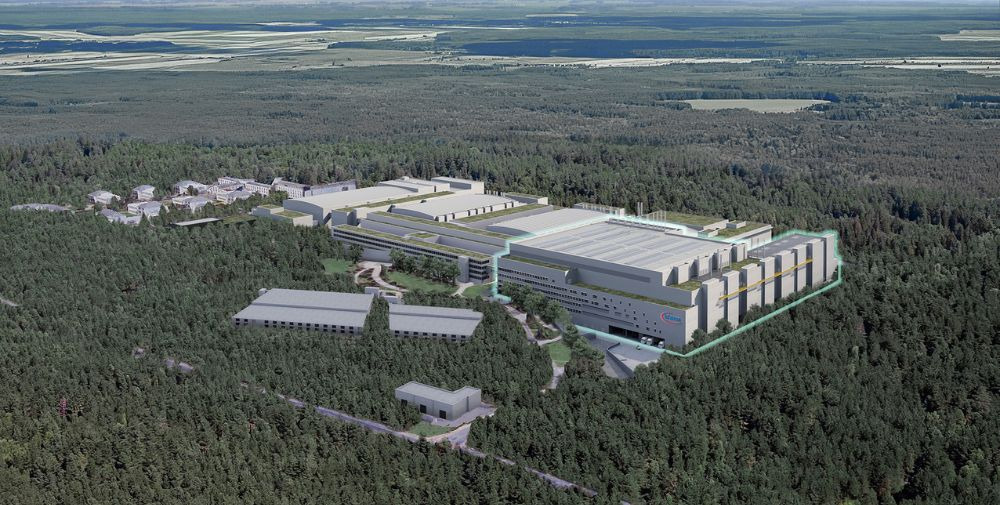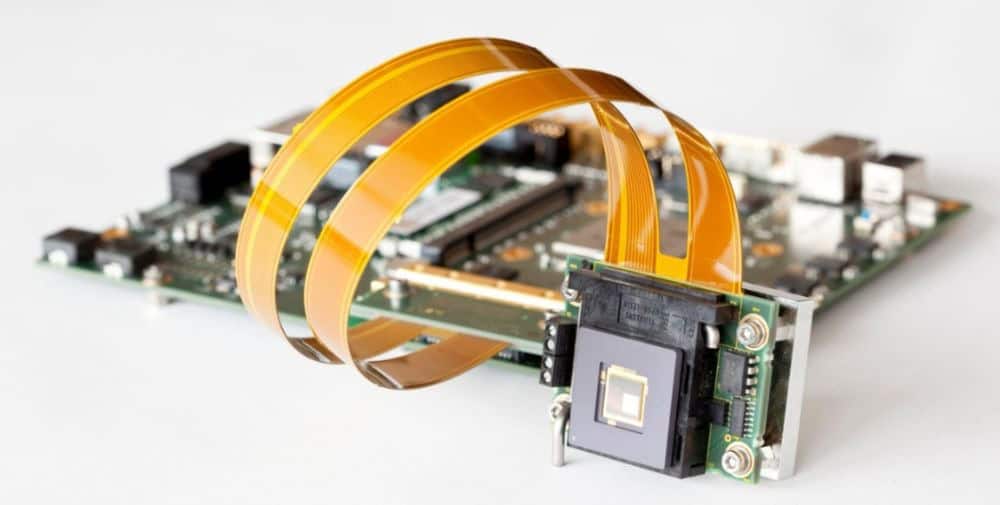Saxony is the microelectronics region of Europe. For a long time, the Free State flew under the radar. It was only the “chip crisis” during the coronavirus pandemic that put the spotlight on what has been created here since the political change in 1990. A high-tech cluster that has nothing to hide behind worldwide. A microelectronics region in which every third microchip manufactured in Europe is produced. And the trend is rising. Silicon Saxony was long ridiculed for its name, which – like the term “Silicon Valley” – was coined by an American journalist (Richard Hornik from TIME magazine) in the early years of the cluster (1995). The metropolitan region between Dresden, Leipzig and Chemnitz now rightly bears this name. As with its American counterpart, an impressive collection of universities, research institutes, start-ups, small and medium-sized enterprises, large companies such as semiconductor manufacturers and exciting “future bets” (the numerous start-ups in the region) on the technologies of today and tomorrow has emerged from a small, initially inconspicuous nucleus. A total of 3,650 ICT companies now characterize Saxony as a business location. 76,100 employees earn their living here (as of March 2022). Around 5,000 new employees are added every year. According to current forecasts, the local ICT cluster will provide more than 100,000 people with wages and work for the first time by 2030. Hardly any other high-tech region in Germany or Europe is booming to this extent and with such consistency.
Strong and growing research landscape with the top institutes in Europe
The first important building blocks of success were established in Saxony shortly after the fall of the Berlin Wall. Even then, numerous research institutions were attracted to the region. Saxony now has the highest density of Fraunhofer Institutes (14 institutes) in the world. Of these, a total of nine institutes with a clear microelectronics and ICT focus are located in the Free State, including highly specialized facilities such as Fraunhofer IPMS, Fraunhofer IKTS, Fraunhofer IZM and Fraunhofer ENAS. The latter will soon be opening a test center with a clear microelectronics focus in Chemnitz, further expanding its location expertise.
The Fraunhofer Group for Microelectronics was also founded in 1996 to coordinate the research activities of the Fraunhofer Institutes working in the fields of microelectronics and microintegration. Since 2017, eleven Fraunhofer Institutes of the Group for Microelectronics have also been working together with the two Leibniz Institutes FBH and IHP as the “Research Fab Microelectronics Germany” (FMD). As a one-stop store, the FMD combines the scientifically excellent technologies, applications and system solutions of the cooperating institutes into a combined overall offering in the field of microelectronics and nanoelectronics.
In addition, three Leibniz, one Helmholtz and two Max Planck Institutes in Saxony are also conducting research in the field of microelectronics. The Helmholtz-Zentrum Dresden-Rossendorf (HZDR), for example, is working on the development of innovative materials for memory and computer technologies of the future. To improve the quality of single crystals, HZDR researchers are also calculating the magnetic fields required to produce perfect 300 mm and 450 mm wafers from molten silicon. Concentrated research power in the Free State and a trump card in every relocation discussion.
Excellent university landscape with flagship TU Dresden
However, it is not only Saxony’s research landscape that enjoys an excellent reputation worldwide and has been growing steadily since 1990, Saxony’s university landscape also stands for steadily growing success and student numbers with its flagship, the University of Excellence TU Dresden. Around 9,000 graduates now leave the four universities and five universities of applied sciences in the region every year. This is an important potential pool of skilled workers, which is being expanded step by step in cooperation with business and industry and geared towards the needs of the microelectronics region. The four universities – Chemnitz University of Technology (TUC), Dresden University of Technology (TUD), Freiberg University of Mining and Technology (TUBAF) and Leipzig University (UL) – offer a wide range of subjects and degrees that are recognized and in demand worldwide.
Courses such as electrical engineering/electronics, microsystems technology, mechatronics, physics, chemistry and mechanical engineering/engineering, which are so important for Saxony, are in high demand and train highly qualified specialists. The five universities of applied sciences – Dresden University of Applied Sciences (HTW), Leipzig University of Applied Sciences (HTWK), Mittweida University of Applied Sciences (HSM), Zittau/Görlitz University of Applied Sciences (HSZG) and West Saxon University of Applied Sciences Zwickau (WHZ) – offer no less outstanding training and further education opportunities. Together with the state’s vocational academies, they offer the best opportunities for established and new companies to establish themselves.
Saxony’s universities and colleges not only combine the fields of education and research – they are among Germany’s largest research institutions – they are also excellent “breeding grounds”, so-called incubators, for innovative spin-offs and start-ups.
Lively and constantly growing start-up scene
TU Dresden in particular is one of the top 10 most start-up-rich European universities. In 2023, Saxony’s largest university founded the “TUD Center of Excellence for Innovation, Transfer and Entrepreneurship – TUD|excite”. It bundles TU Dresden’s activities and services relating to knowledge and technology transfer, patents and spin-offs. University programs such as SAXEED, dresden|exists and SMILE already support spin-offs at the universities and colleges – and of course far beyond. Various regional start-up networks, accelerators and associations are active in the Free State and support start-ups. Exciting start-ups such as SpiNNcloud Systems – a deep-tech spin-off from the Chair of Highly Parallel VLSI Systems and Neuro-Microelectronics at the Technical University of Dresden – or SEMRON – an up-and-coming start-up developing CapRAM™ (also from TU Dresden) – are just two examples of a vibrant and constantly growing start-up ecosystem that is constantly being replenished by Saxony’s universities and colleges.
The newly founded or spun-off start-ups find networks and players in the state such as the Hightech Startbahn Netzwerk, futureSAX or the Sächsisches Existenzgründernetzwerk, which support them with their expertise in the first difficult years of founding. With the best advice and support from numerous funding instruments, the start-up sector has also been growing steadily for decades. Through membership of networks such as Silicon Saxony and the proximity this creates to established high-tech companies, start-ups gain access to important resources, know-how and support services. These are excellent conditions for making a name for yourself and growing successfully. With every start-up that masters the first difficult years with such support, the number of small and medium-sized enterprises, which are particularly prevalent in the new federal states, also grows.
Broad SME sector with up-and-coming small and medium-sized enterprises
In turn, the small and medium-sized enterprises (SMEs) in the location are also excellent sparring partners for start-ups and support them with their accumulated expertise. This is a continuously self-fertilizing system that allows the location and the region to continue to grow. Saxony and the new federal states in general build their success and economic strength on this robust SME community. 99.8 percent of companies in the Free State are SMEs. As of 2022, 3,650 companies alone work in the ICT and microelectronics sector.
This successful SME sector is characterized by its comparatively young ownership structure, its willingness to innovate and its dynamism. The average age of the local company leaders is 48. Saxony’s SMEs are correspondingly ambitious and agile, also in the field of microelectronics. Saxony’s SMEs are particularly active in the field of research and development (R&D). Companies with up to 250 employees in Saxony invest more in R&D than their counterparts nationwide. Participation in research collaborations among this class of companies is also higher than in Germany as a whole.
The wide range of services, solutions and products offered by SMEs also means that Saxony has an almost complete value chain in the field of microelectronics. Starting with research and the raw material and material expertise available here, through chip design and the production of semiconductors to end users (e.g. in the strong Saxon automotive industry), the Free State is ideally positioned. The fact that steady growth has been observed in the SME sector for years is also due to the few, but all the more important, large companies such as TSMC, Infineon, GlobalFoundries and Bosch. In their wake, they attract new SMEs to Saxony or encourage companies already active in the state to expand their sites in terms of personnel and infrastructure.
Companies closely associated with microelectronics are also currently expanding their Saxon branches in the wake of the EU Chips Act. For example, Siltronic expanded its crystal pulling hall at the Freiberg site. Jenoptik is currently building a new high-tech factory for the production of micro-optics and sensors, primarily for the semiconductor equipment industry. Service providers, such as Sachsenkälte, are also currently expanding their capacities at the site. Large companies, and in Saxony’s case especially the microelectronics fabs, are growth accelerators. For every job in such a company, around six new jobs are created in the microelectronics sector with suppliers and service providers, i.e. in SMEs.
Top players in the European and international semiconductor sector
With GlobalFoundries, Bosch, Infineon, X-FAB and SAW COMPONENTS, five microelectronics fabs are already active in the Dresden area today (as of October 2023) and thus in the heart of Silicon Saxony. Bosch was the last major semiconductor plant to set up in the region in 2017, investing a total of one billion euros. To this day, the Bosch plant is constantly expanding its capacities and is already planning new investments at the site. GlobalFoundries and Infineon also remain ambitious. GlobalFoundries wants to invest almost 7.6 billion euros in its Dresden fab by the end of the decade. The capacity of the already huge plant is to be almost doubled. Talks are currently underway with the German government regarding possible funding. It would be the next big coup for Saxony’s microelectronics cluster. Infineon is already massively expanding its existing site, the largest after its main site in Villach, Austria. A total of five billion euros is currently being invested in Dresden and in a new Infineon plant – a so-called “Smart Power Fab”. The company’s largest single investment and another reason for Saxon jubilation.
Not least, another new fab will be starting work in Dresden in the foreseeable future with foundry world market leader Taiwan Semiconductor Manufacturing Company (TSMC; start: 2027). In a consortium with Bosch, Infineon and NXP, TSMC will build a new semiconductor plant in Dresden under the name European Semiconductor Manufacturing Company (ESMC) – worth ten billion euros. This is the largest and most expensive new establishment in the Free State since the political change and an accolade for the region. Due to the investments of the Taiwanese chip manufacturer and the other fabs at the location, numerous companies – especially service providers, material and chemical suppliers – are already planning to set up new branches in Saxony or expand existing company locations. With the fabs at the site and Intel’s upcoming giga-fab in nearby Magdeburg, this is an understandable idea. The heart of European microelectronics is constantly growing and so is the importance of what is already Europe’s largest microelectronics cluster. Companies that have their sights set on the more distant future of semiconductors also work here. Quantum Grad Materials, one of these companies in Saxony, for example, produces high-purity silicon for the quantum chips of tomorrow. Just one example of many.
Saxony is home to Europe’s largest microelectronics cluster, Silicon Saxony
Not least, the booming business and science location of Saxony is also reflected in its largest industrial cluster, Silicon Saxony. Since the semiconductor shortage, hardly a month has gone by without positive news – from expansion plans and new relocations to record sales. The high-tech network is now growing as rapidly as it did in its early years. More than 500 companies from the location are united here (as of 2023), working together more closely than ever and also speaking with one voice to political decision-makers.
Conclusion and forecast for further growth
There are no longer any doubts about the further growth of Saxony as a location. Apart from the economic crisis in 2010, no event – from pandemic to war – has been able to slow it down. And even in 2010, the location grew, albeit not as rapidly as in the years before or after. In 2022, 30,000 people were working in Saxony’s microelectronics sector (over 76,000 in the Saxon ICT sector). This figure is expected to grow to 50,000 by 2030. By then, more than 100,000 people will be employed in the entire ICT sector in the Free State. The industry’s latest announcements regarding relocations and expansions once again underline this forecast, which was already made in 2022. There are many indications that the magical 100,000 figure could even be significantly exceeded. Dresden in particular is already preparing for more than 24,000 people (not including the growing demand from the rest of the ICT sector) from Germany, Europe and the world to move to the local semiconductor region. Planning for new infrastructure such as housing, kindergartens, schools etc. is already in full swing. Saxony’s microelectronics and ICT sector is the state’s growth accelerator and is likely to remain so for the foreseeable future.
___________________________________________________________________________________________________________________________________________
This article was first published as part of our NEXT magazine “In Focus: Microelectronics”.
👉 To the full issue of the magazine
Photo: Infineon


